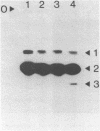Abstract
In addition to the major encapsidated DNA species found in preparations of cassava latent virus (genomic DNAs 1 and 2) there are minor DNA populations of twice (dimeric) and approximately half genome length. Both minor species resemble the genomic DNAs in that they are composed of predominantly circular single-stranded DNA. All of these size groups have a corresponding covalently-closed circular double-stranded DNA form in infected tissue. Infectivity studies using cloned DNAs 1 and 2 show that dimeric DNA routinely appears, suggesting it to be an intermediate in the DNA replicative cycle that can be encapsidated at low efficiency. In contrast, half unit length DNA has not yet been detected after multiple passaging of virus derived from the cloned DNA inoculum. Half unit length DNAs appear to be derived exclusively from DNA 2 and consist of a population of molecules exhibiting a relatively specific deletion. As they have an inhibitory effect on virus multiplication, their encapsidated forms are analogous to defective interfering particles associated with other eukaryotic DNA containing viruses. Small primer molecules associated with the genomic single-stranded DNAs, as reported for another geminivirus, have not been detected in CLV.
Full text
PDF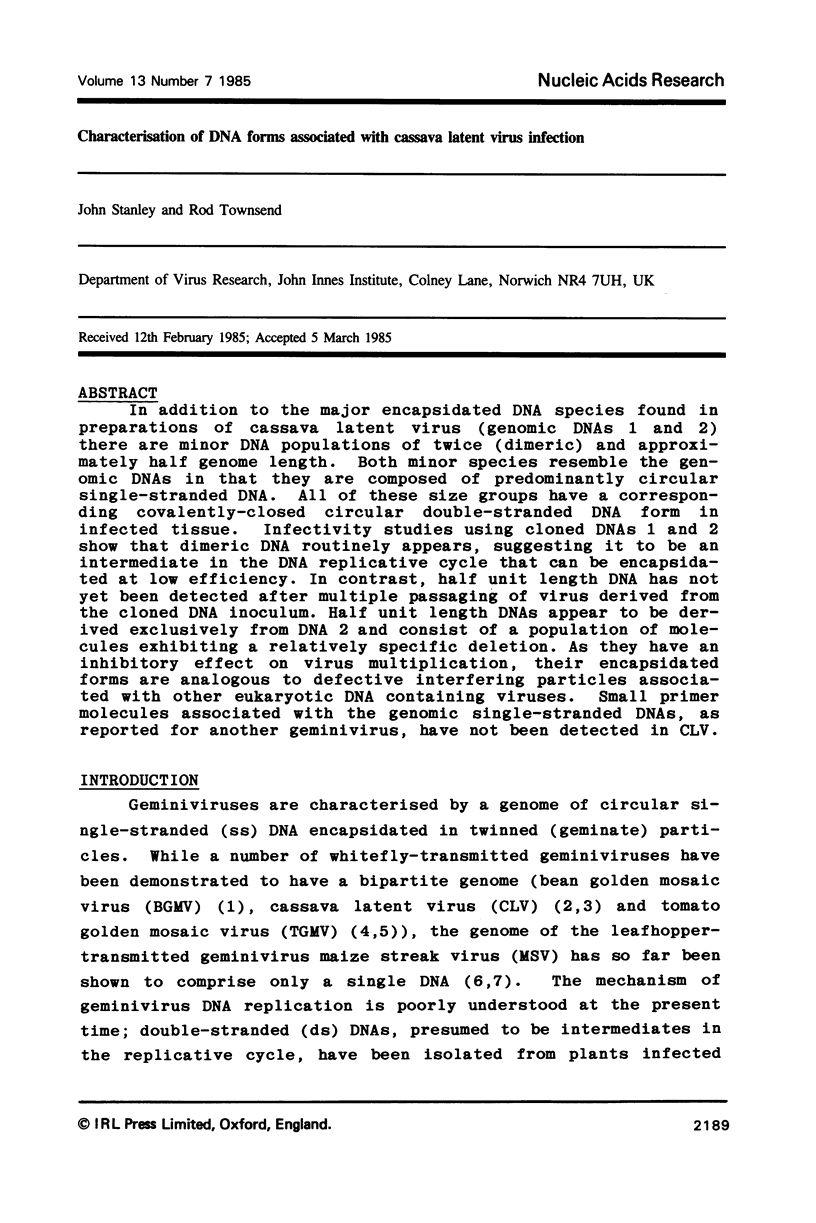
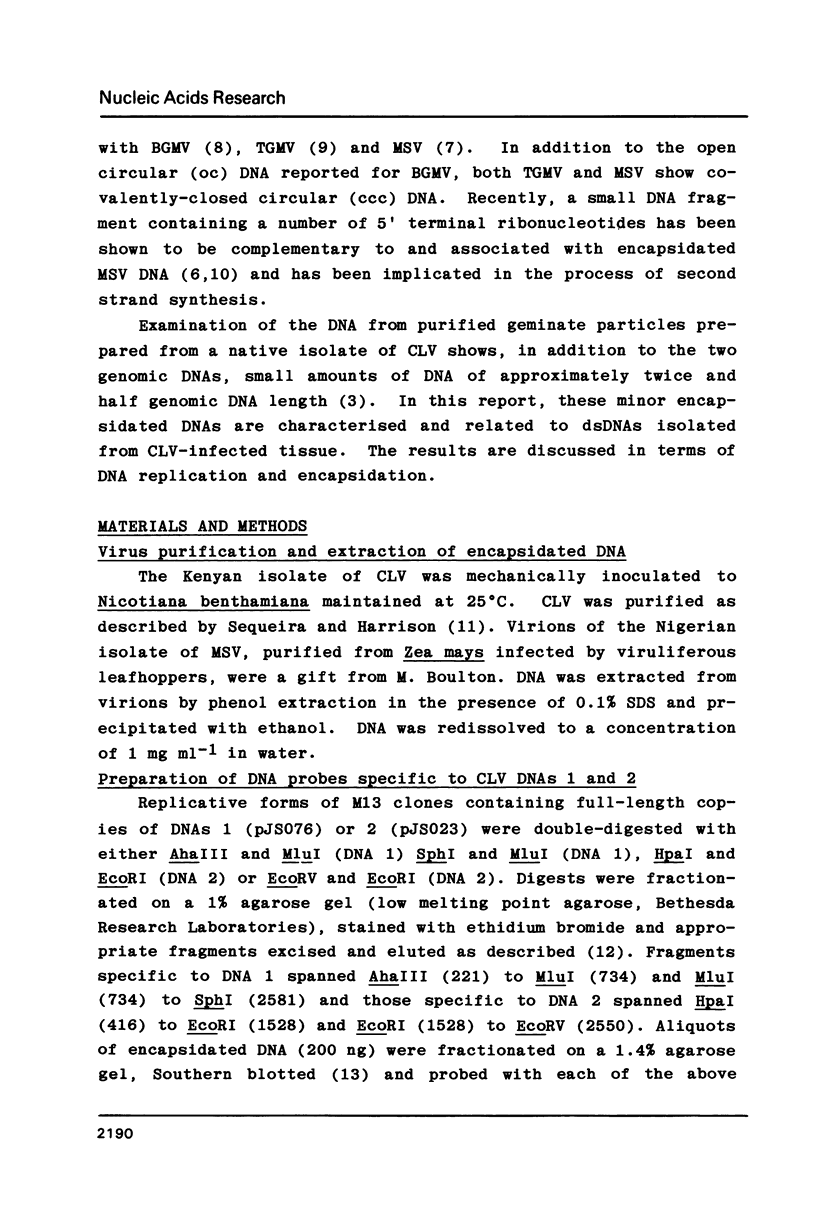
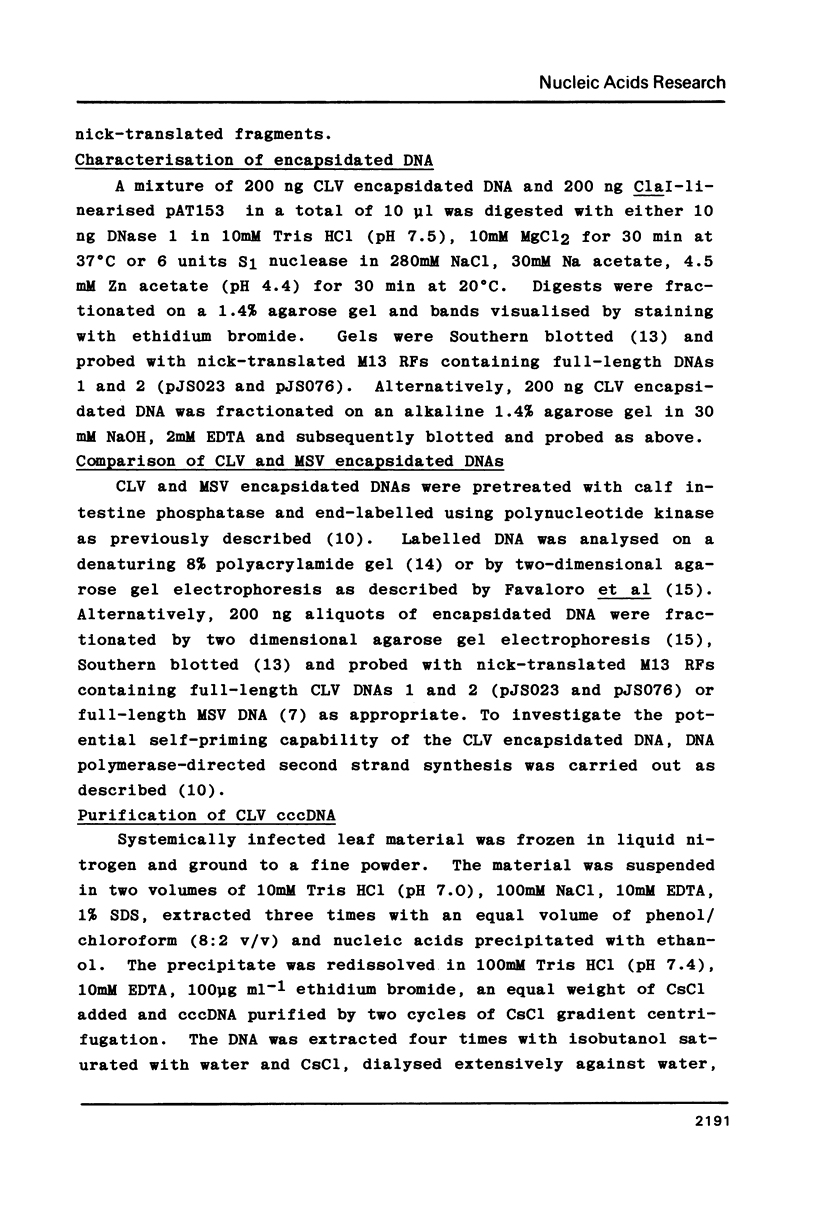
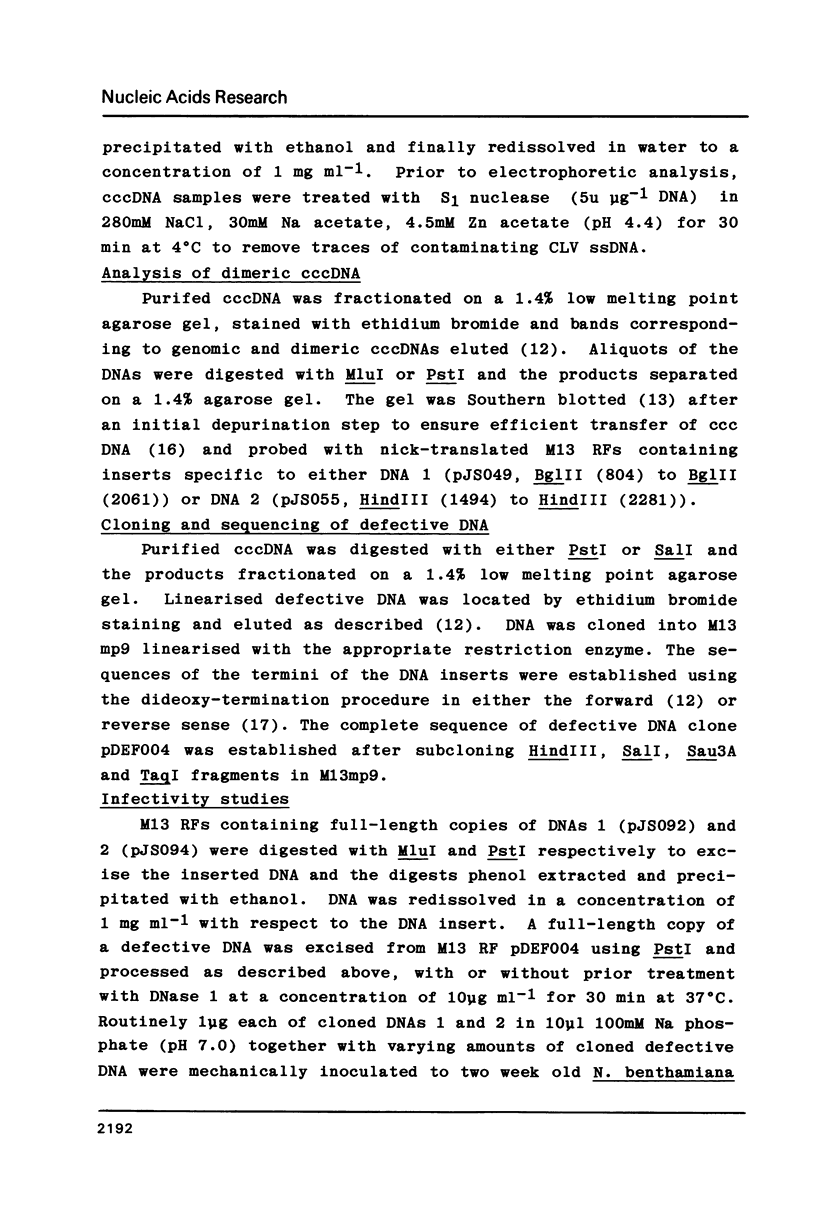
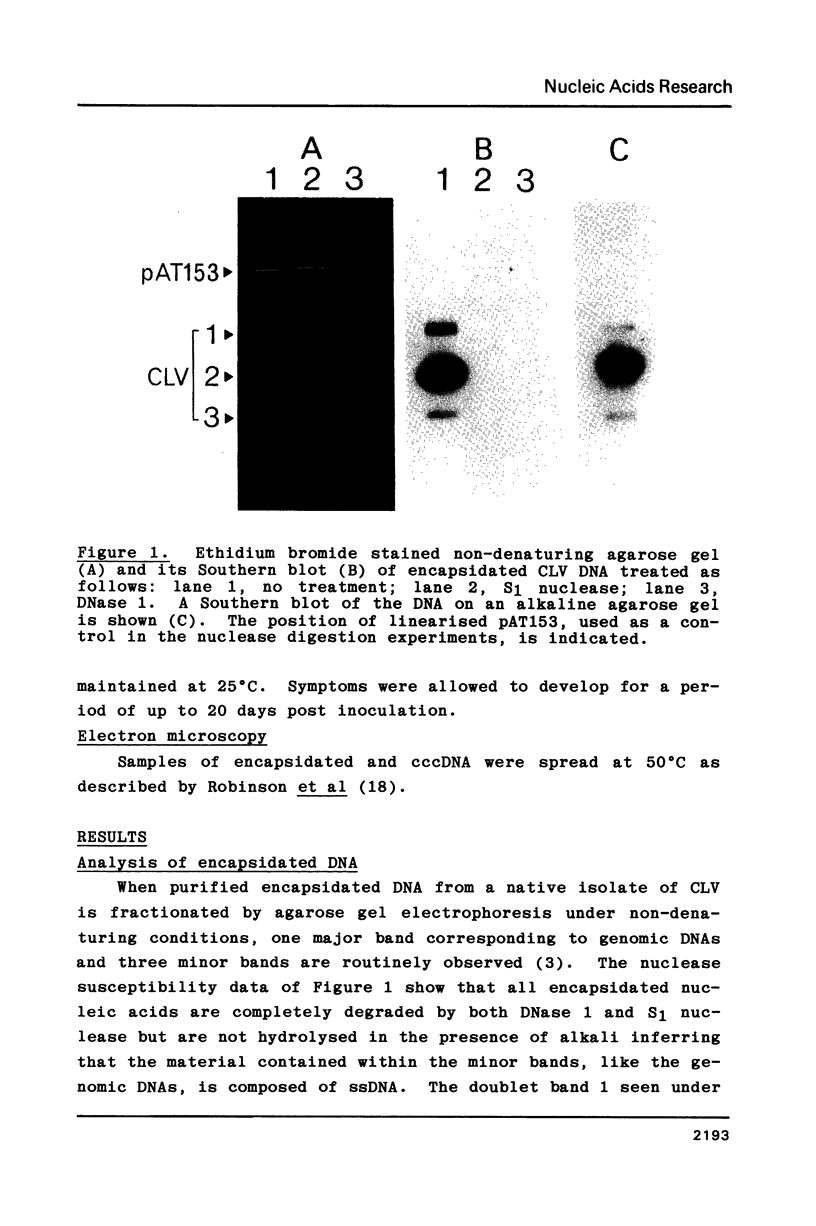
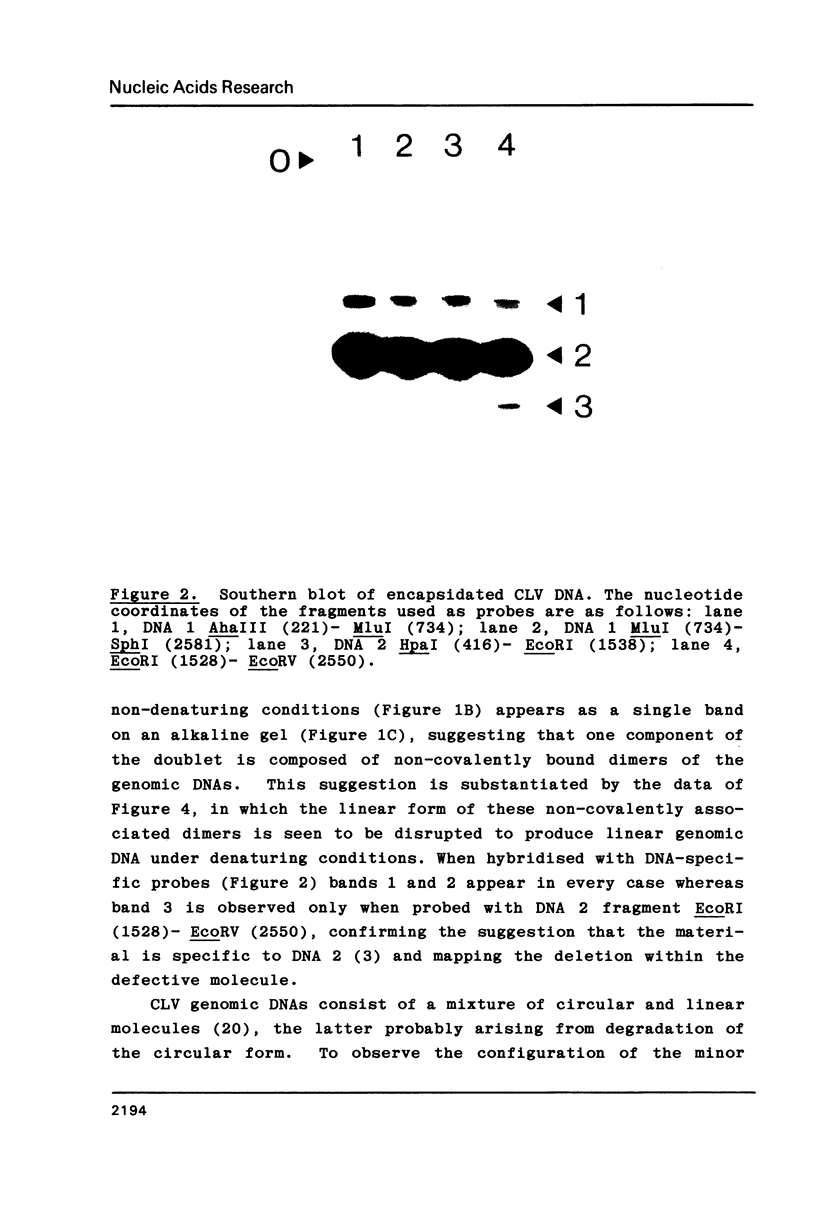
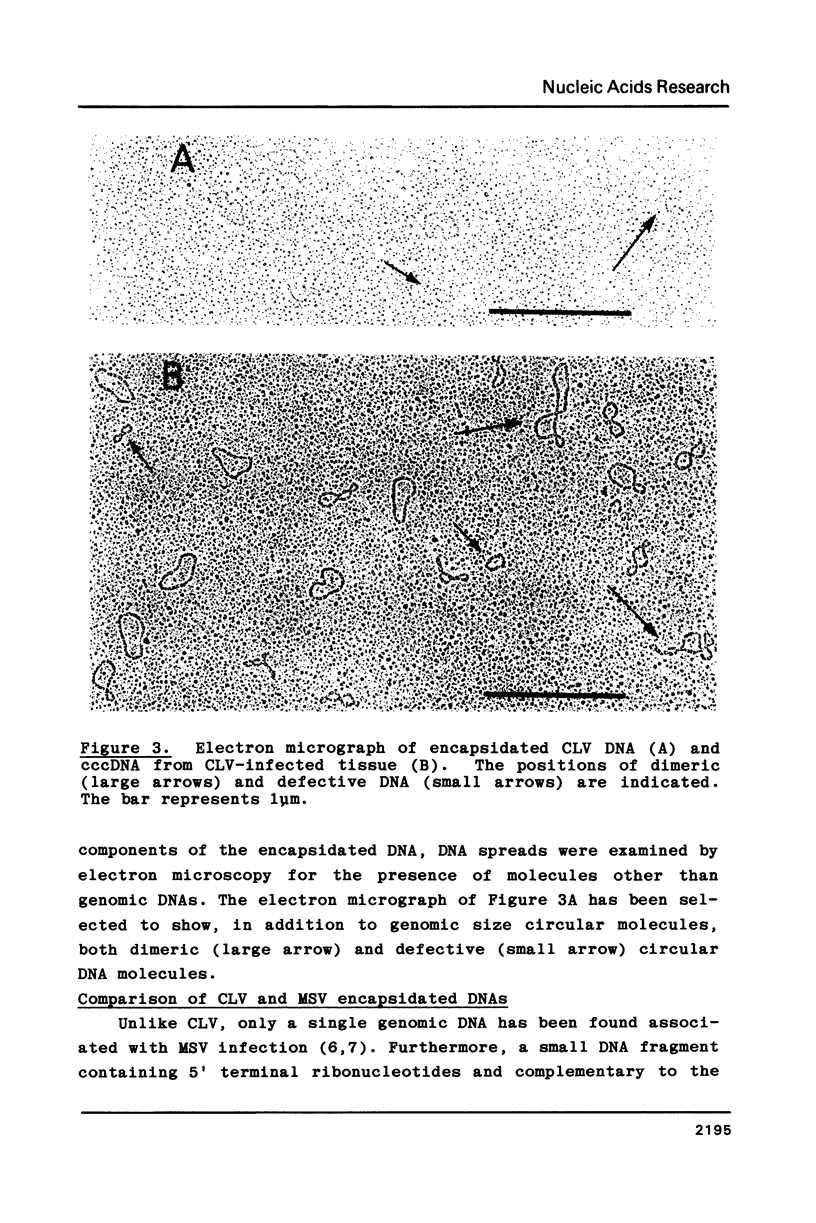
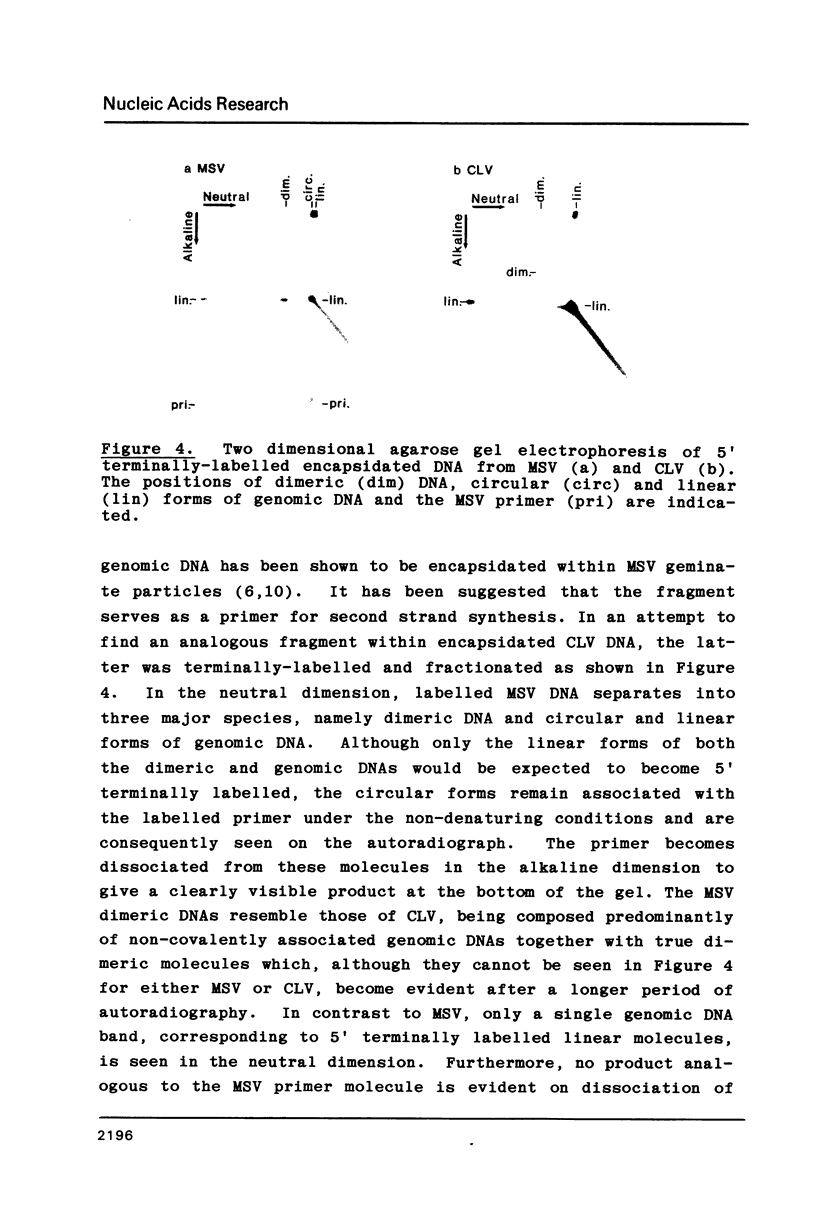
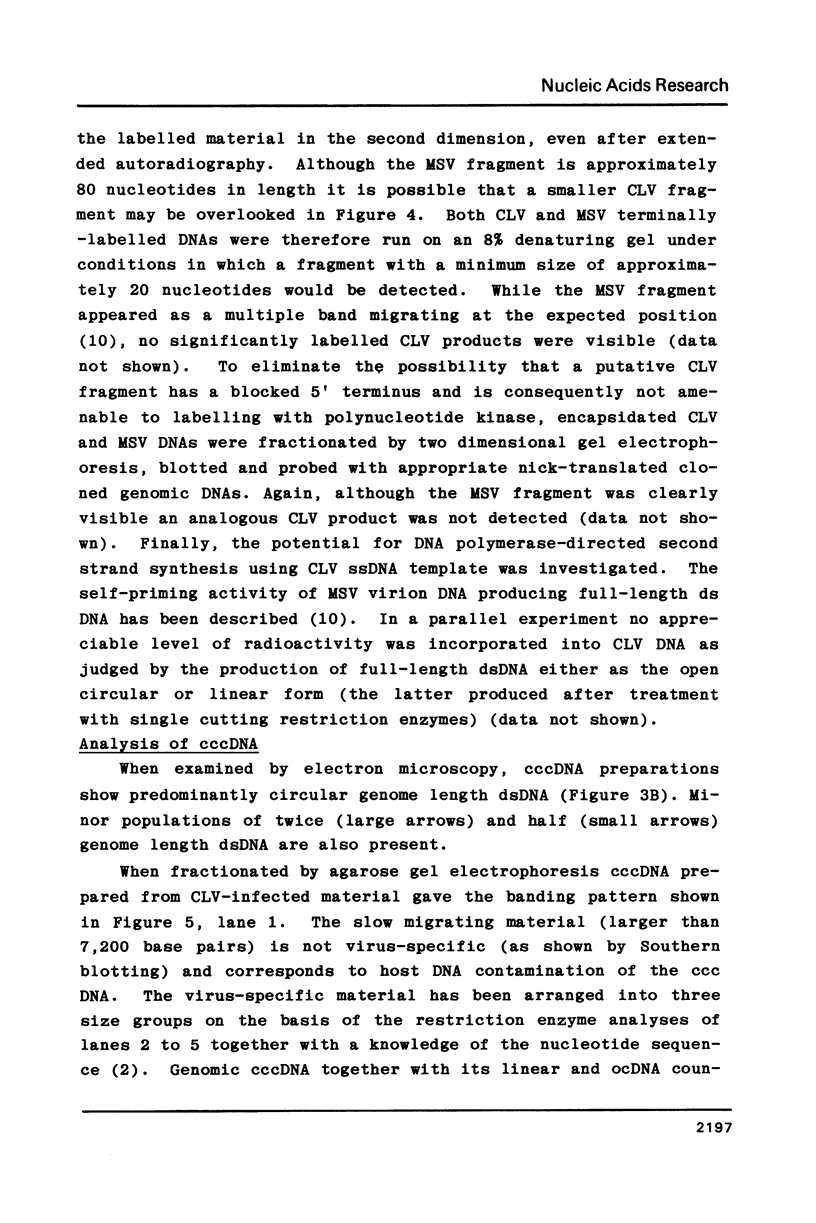
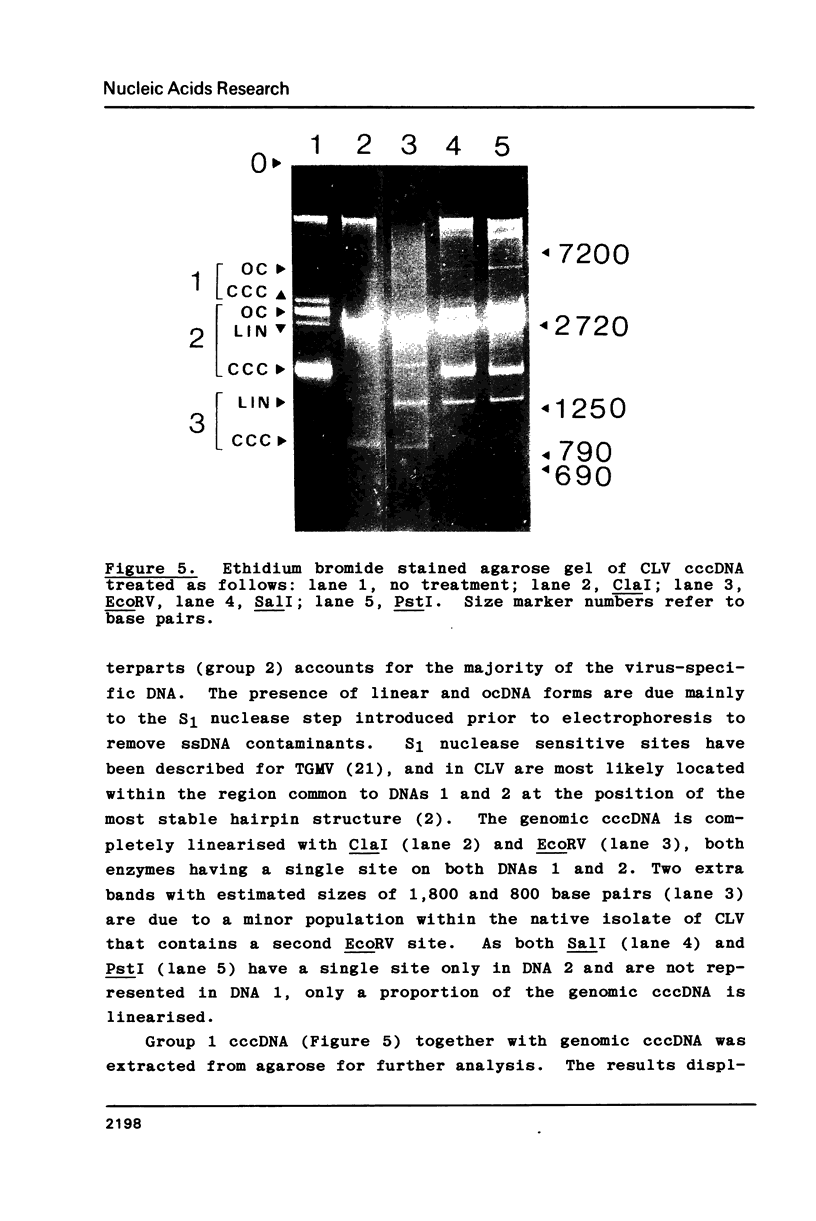
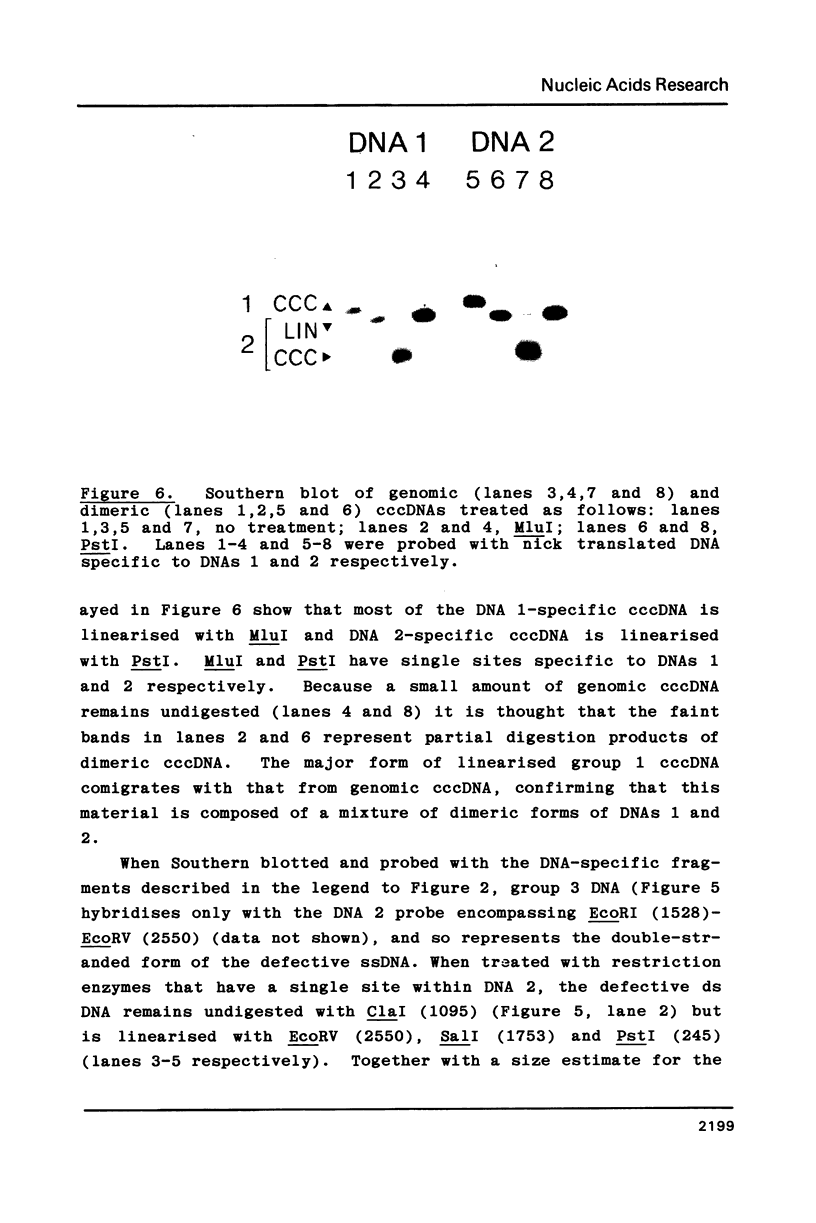
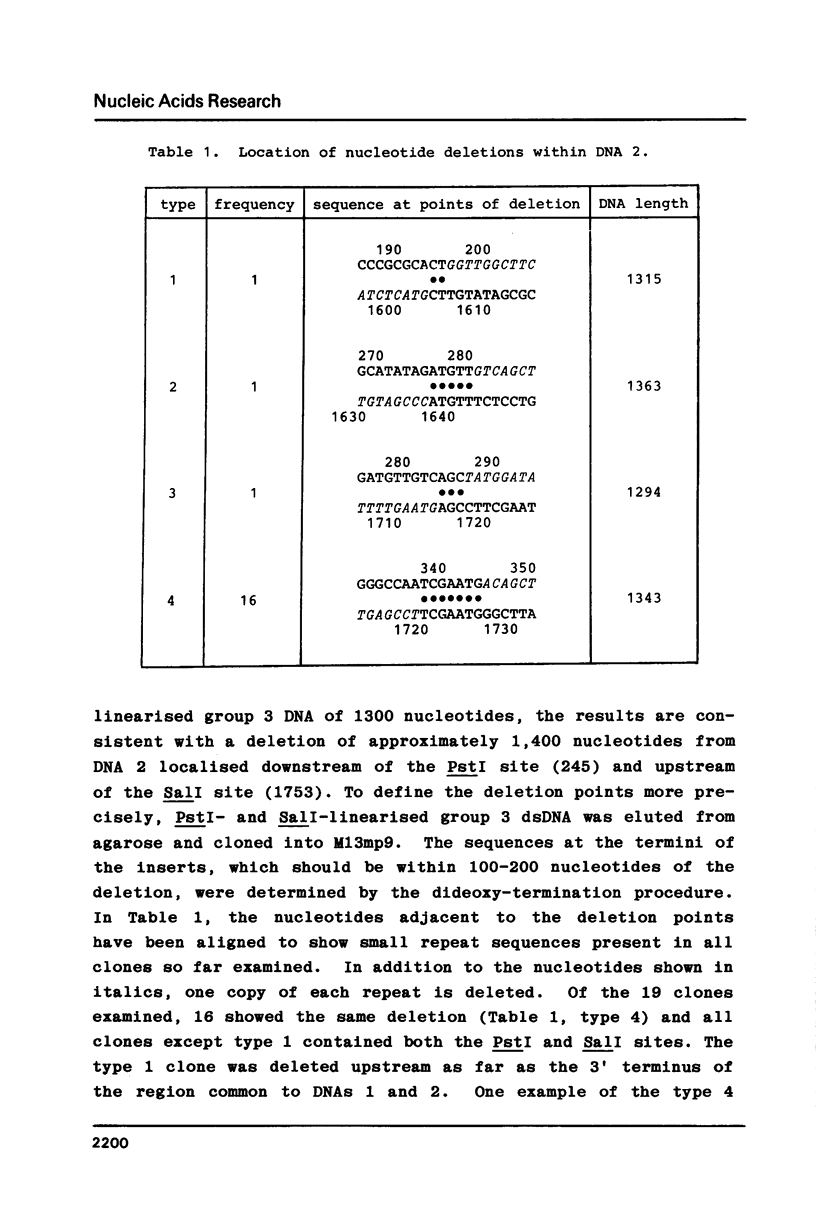
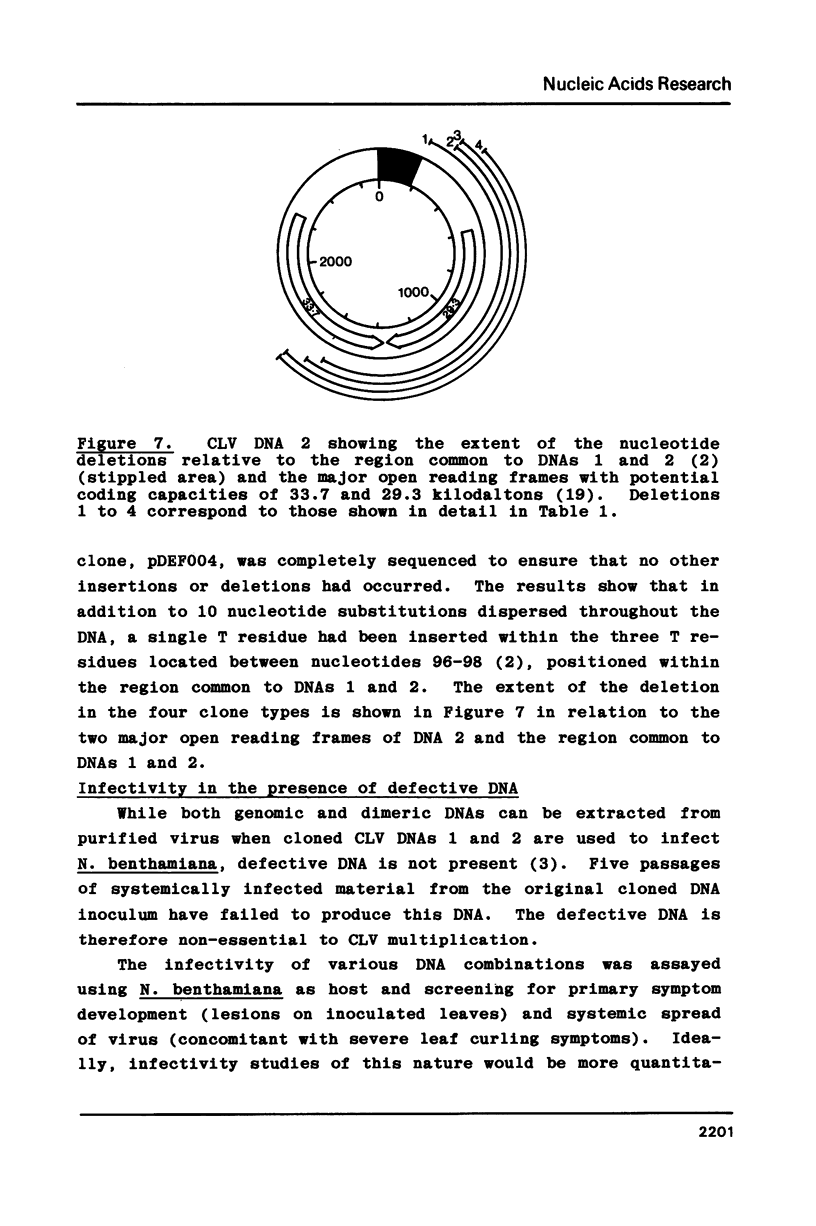
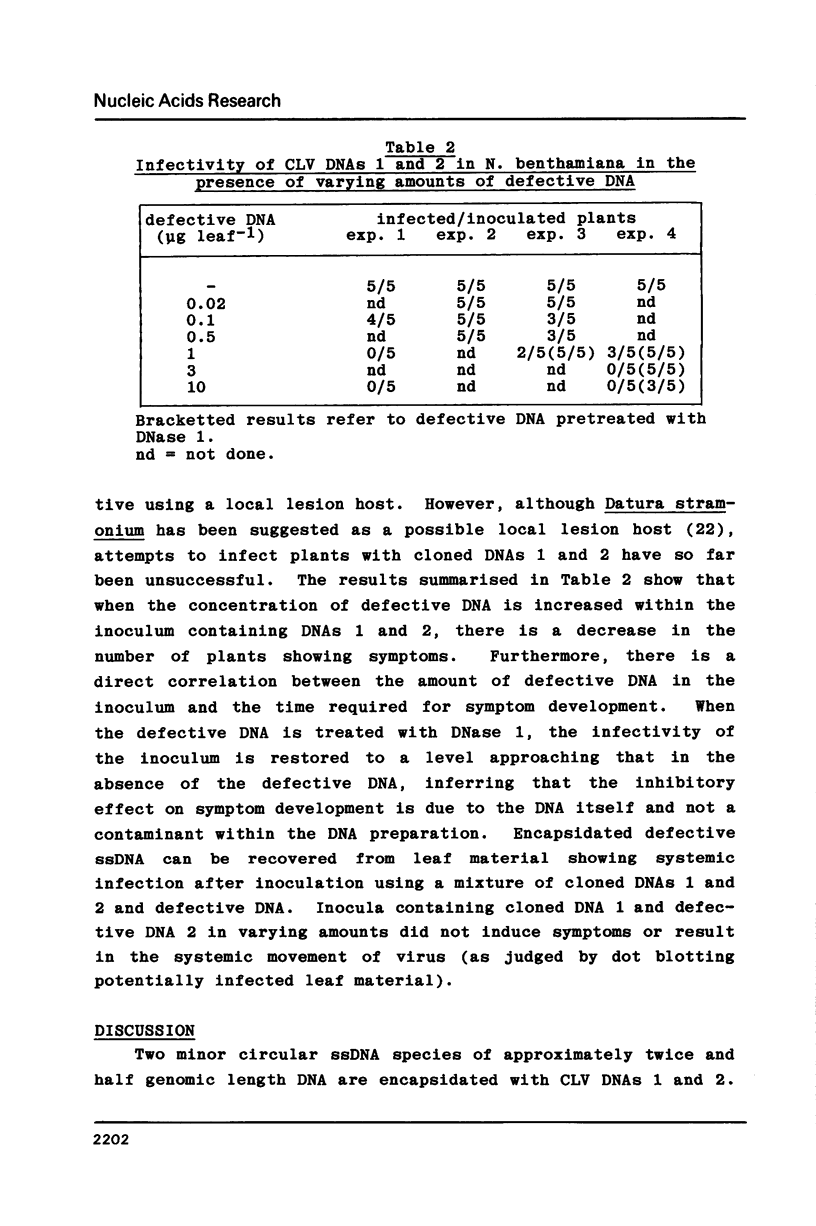
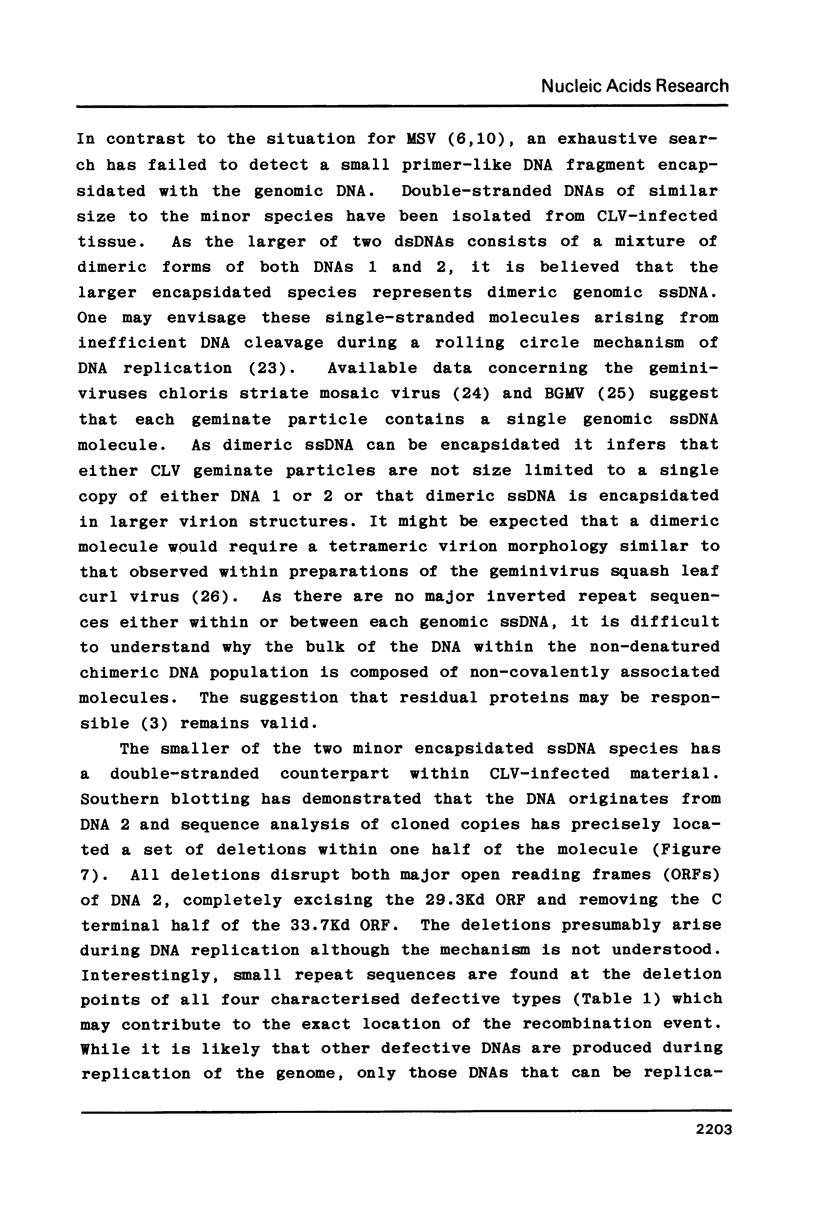
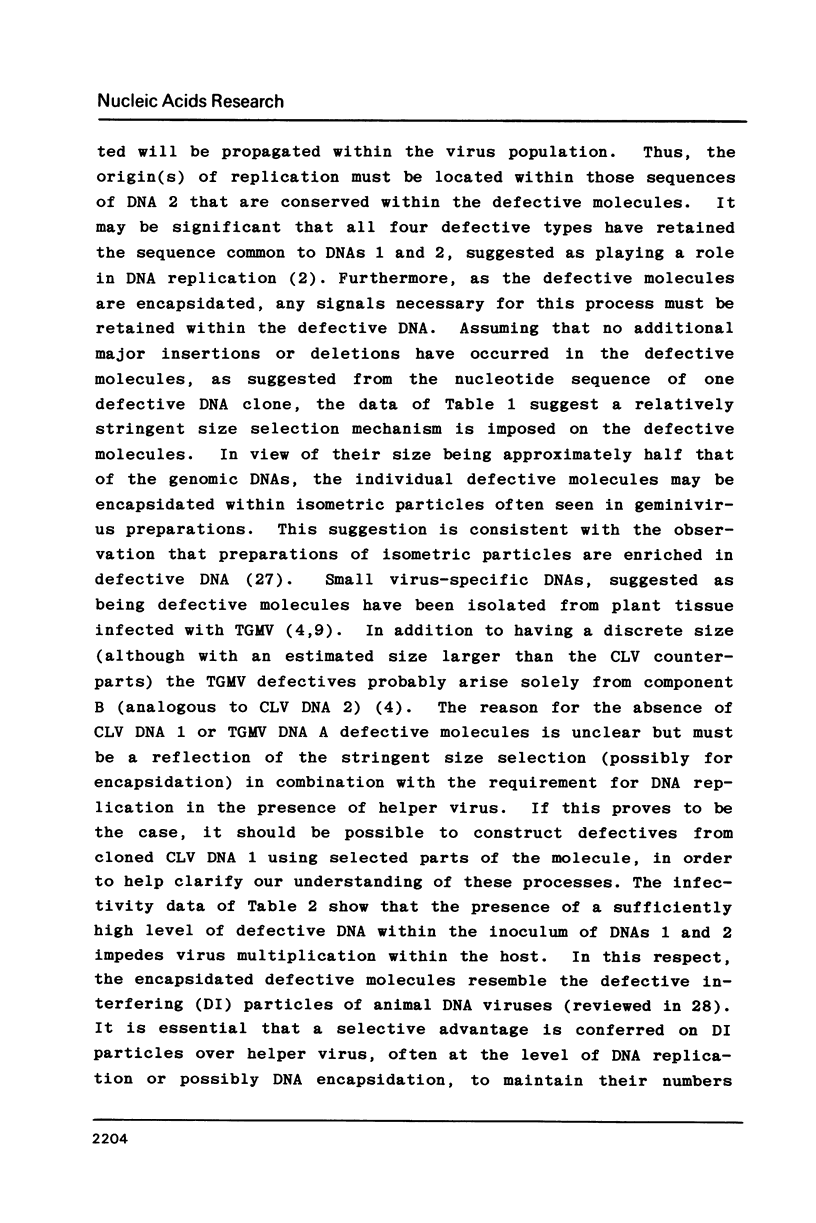
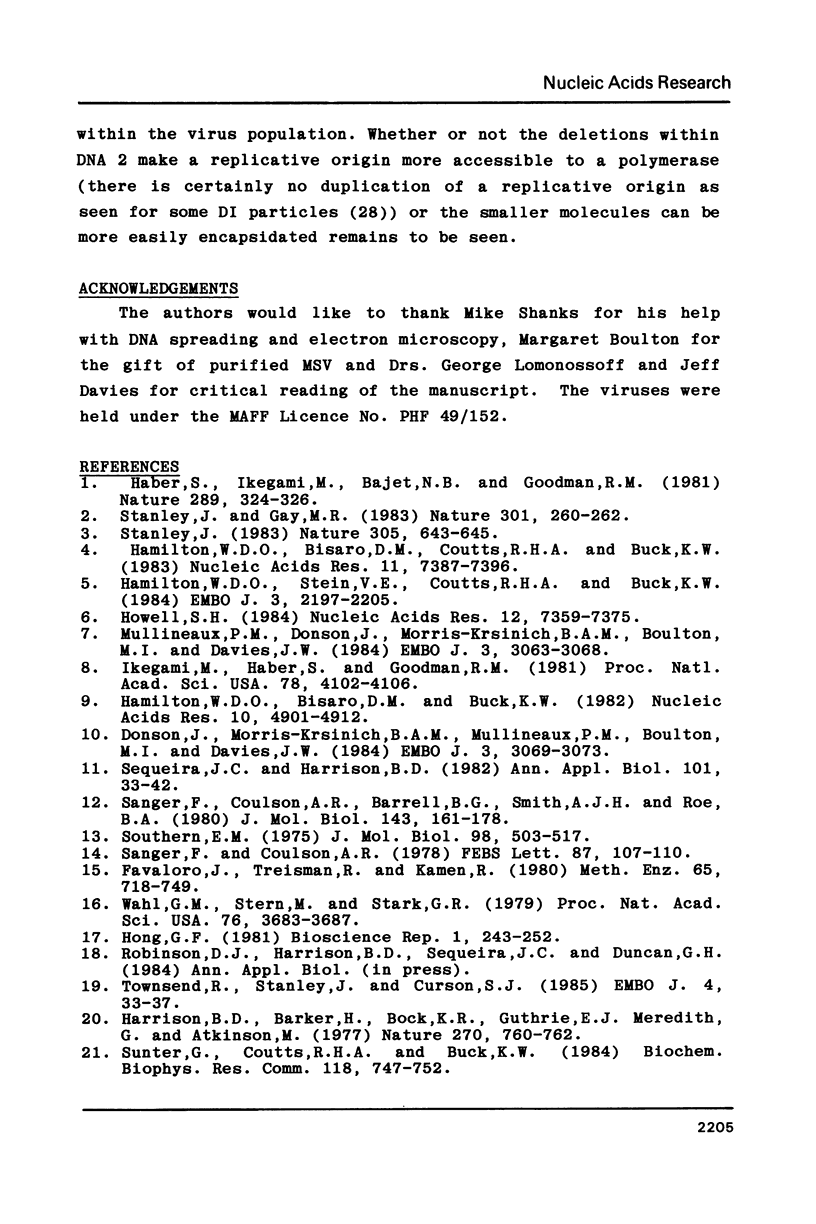
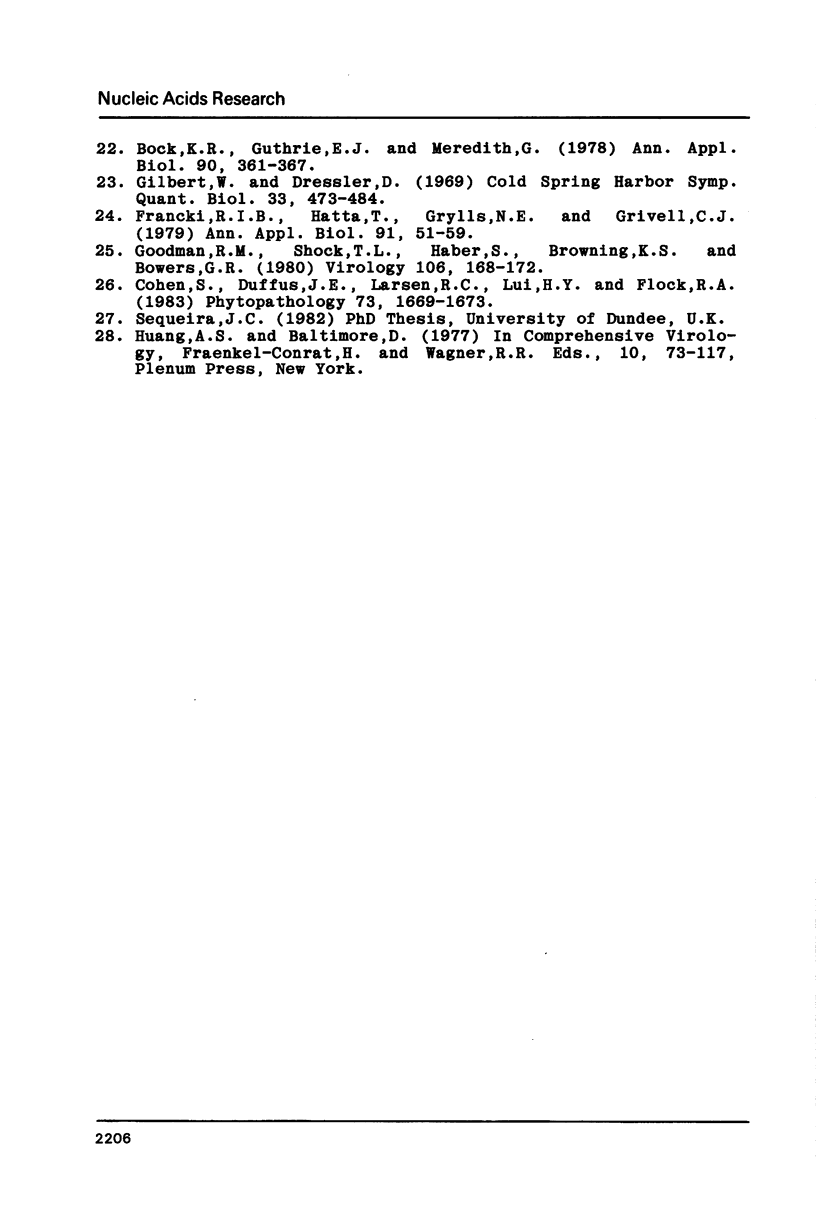
Images in this article
Selected References
These references are in PubMed. This may not be the complete list of references from this article.
- Donson J., Morris-Krsinich B. A., Mullineaux P. M., Boulton M. I., Davies J. W. A putative primer for second-strand DNA synthesis of maize streak virus is virion-associated. EMBO J. 1984 Dec 20;3(13):3069–3073. doi: 10.1002/j.1460-2075.1984.tb02260.x. [DOI] [PMC free article] [PubMed] [Google Scholar]
- Favaloro J., Treisman R., Kamen R. Transcription maps of polyoma virus-specific RNA: analysis by two-dimensional nuclease S1 gel mapping. Methods Enzymol. 1980;65(1):718–749. doi: 10.1016/s0076-6879(80)65070-8. [DOI] [PubMed] [Google Scholar]
- Gay N. J., Walker J. E. Homology between human bladder carcinoma oncogene product and mitochondrial ATP-synthase. Nature. 1983 Jan 20;301(5897):262–264. doi: 10.1038/301262a0. [DOI] [PubMed] [Google Scholar]
- Gilbert W., Dressler D. DNA replication: the rolling circle model. Cold Spring Harb Symp Quant Biol. 1968;33:473–484. doi: 10.1101/sqb.1968.033.01.055. [DOI] [PubMed] [Google Scholar]
- Hamilton W. D., Bisaro D. M., Buck K. W. Identification of novel DNA forms in tomato golden mosaic virus infected tissue. Evidence for a two component viral genome. Nucleic Acids Res. 1982 Aug 25;10(16):4901–4912. doi: 10.1093/nar/10.16.4901. [DOI] [PMC free article] [PubMed] [Google Scholar]
- Hamilton W. D., Bisaro D. M., Coutts R. H., Buck K. W. Demonstration of the bipartite nature of the genome of a single-stranded DNA plant virus by infection with the cloned DNA components. Nucleic Acids Res. 1983 Nov 11;11(21):7387–7396. doi: 10.1093/nar/11.21.7387. [DOI] [PMC free article] [PubMed] [Google Scholar]
- Hamilton W. D., Stein V. E., Coutts R. H., Buck K. W. Complete nucleotide sequence of the infectious cloned DNA components of tomato golden mosaic virus: potential coding regions and regulatory sequences. EMBO J. 1984 Sep;3(9):2197–2205. doi: 10.1002/j.1460-2075.1984.tb02114.x. [DOI] [PMC free article] [PubMed] [Google Scholar]
- Hong G. F. A method for sequencing single-stranded cloned DNA in both directions. Biosci Rep. 1981 Mar;1(3):243–252. doi: 10.1007/BF01114911. [DOI] [PubMed] [Google Scholar]
- Howell S. H. Physical structure and genetic organisation of the genome of maize streak virus (Kenyan isolate). Nucleic Acids Res. 1984 Oct 11;12(19):7359–7375. doi: 10.1093/nar/12.19.7359. [DOI] [PMC free article] [PubMed] [Google Scholar]
- Ikegami M., Haber S., Goodman R. M. Isolation and characterization of virus-specific double-stranded DNA from tissues infected by bean golden mosaic virus. Proc Natl Acad Sci U S A. 1981 Jul;78(7):4102–4106. doi: 10.1073/pnas.78.7.4102. [DOI] [PMC free article] [PubMed] [Google Scholar]
- Mullineaux P. M., Donson J., Morris-Krsinich B. A., Boulton M. I., Davies J. W. The nucleotide sequence of maize streak virus DNA. EMBO J. 1984 Dec 20;3(13):3063–3068. doi: 10.1002/j.1460-2075.1984.tb02258.x. [DOI] [PMC free article] [PubMed] [Google Scholar]
- Sanger F., Coulson A. R., Barrell B. G., Smith A. J., Roe B. A. Cloning in single-stranded bacteriophage as an aid to rapid DNA sequencing. J Mol Biol. 1980 Oct 25;143(2):161–178. doi: 10.1016/0022-2836(80)90196-5. [DOI] [PubMed] [Google Scholar]
- Sanger F., Coulson A. R. The use of thin acrylamide gels for DNA sequencing. FEBS Lett. 1978 Mar 1;87(1):107–110. doi: 10.1016/0014-5793(78)80145-8. [DOI] [PubMed] [Google Scholar]
- Southern E. M. Detection of specific sequences among DNA fragments separated by gel electrophoresis. J Mol Biol. 1975 Nov 5;98(3):503–517. doi: 10.1016/s0022-2836(75)80083-0. [DOI] [PubMed] [Google Scholar]
- Sunter G., Coutts R. H., Buck K. W. Negatively supercoiled DNA from plants infected with a single-stranded DNA virus. Biochem Biophys Res Commun. 1984 Feb 14;118(3):747–752. doi: 10.1016/0006-291x(84)91458-x. [DOI] [PubMed] [Google Scholar]
- Townsend R., Stanley J., Curson S. J., Short M. N. Major polyadenylated transcripts of cassava latent virus and location of the gene encoding coat protein. EMBO J. 1985 Jan;4(1):33–37. doi: 10.1002/j.1460-2075.1985.tb02313.x. [DOI] [PMC free article] [PubMed] [Google Scholar]
- Wahl G. M., Stern M., Stark G. R. Efficient transfer of large DNA fragments from agarose gels to diazobenzyloxymethyl-paper and rapid hybridization by using dextran sulfate. Proc Natl Acad Sci U S A. 1979 Aug;76(8):3683–3687. doi: 10.1073/pnas.76.8.3683. [DOI] [PMC free article] [PubMed] [Google Scholar]




